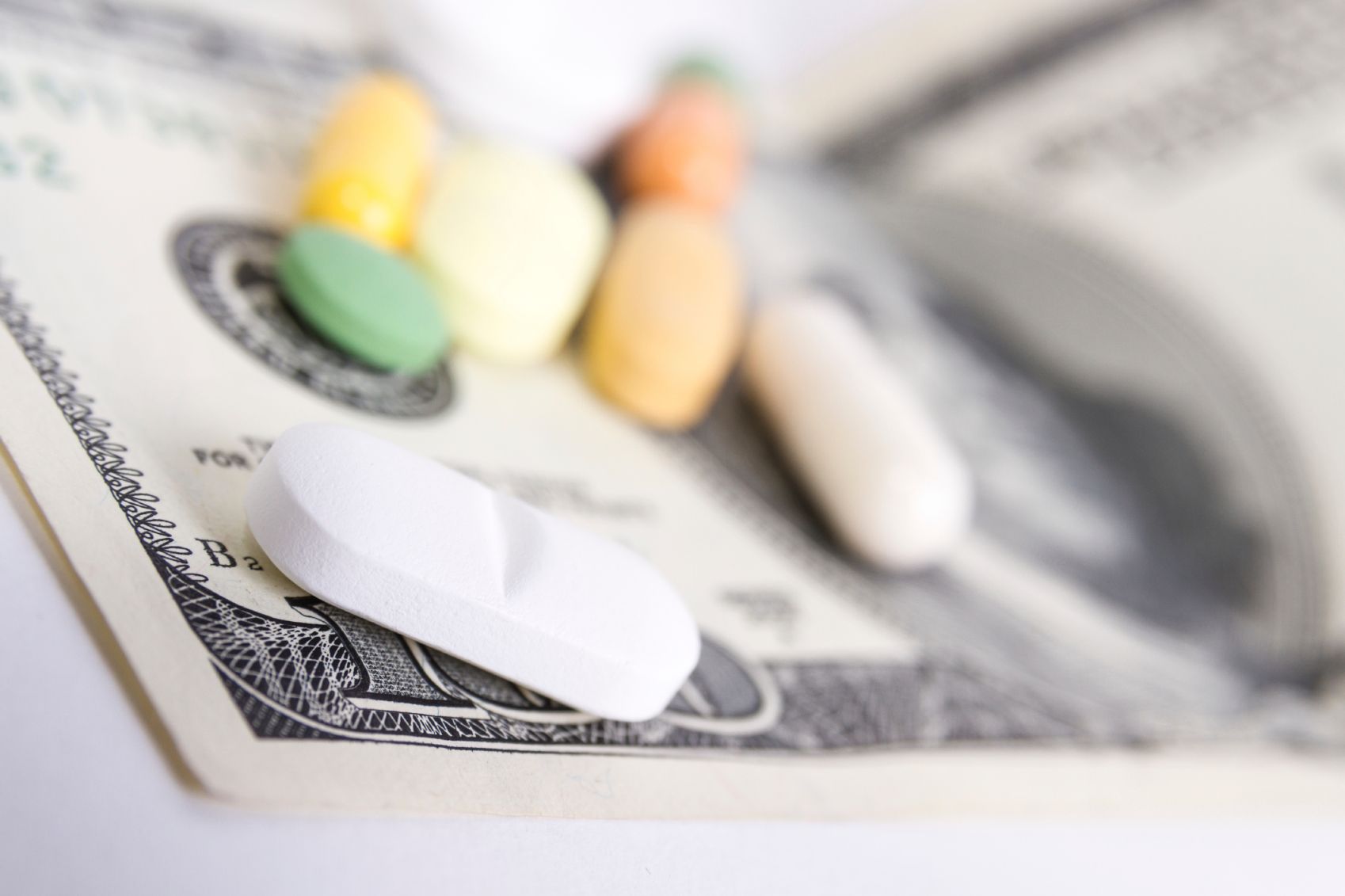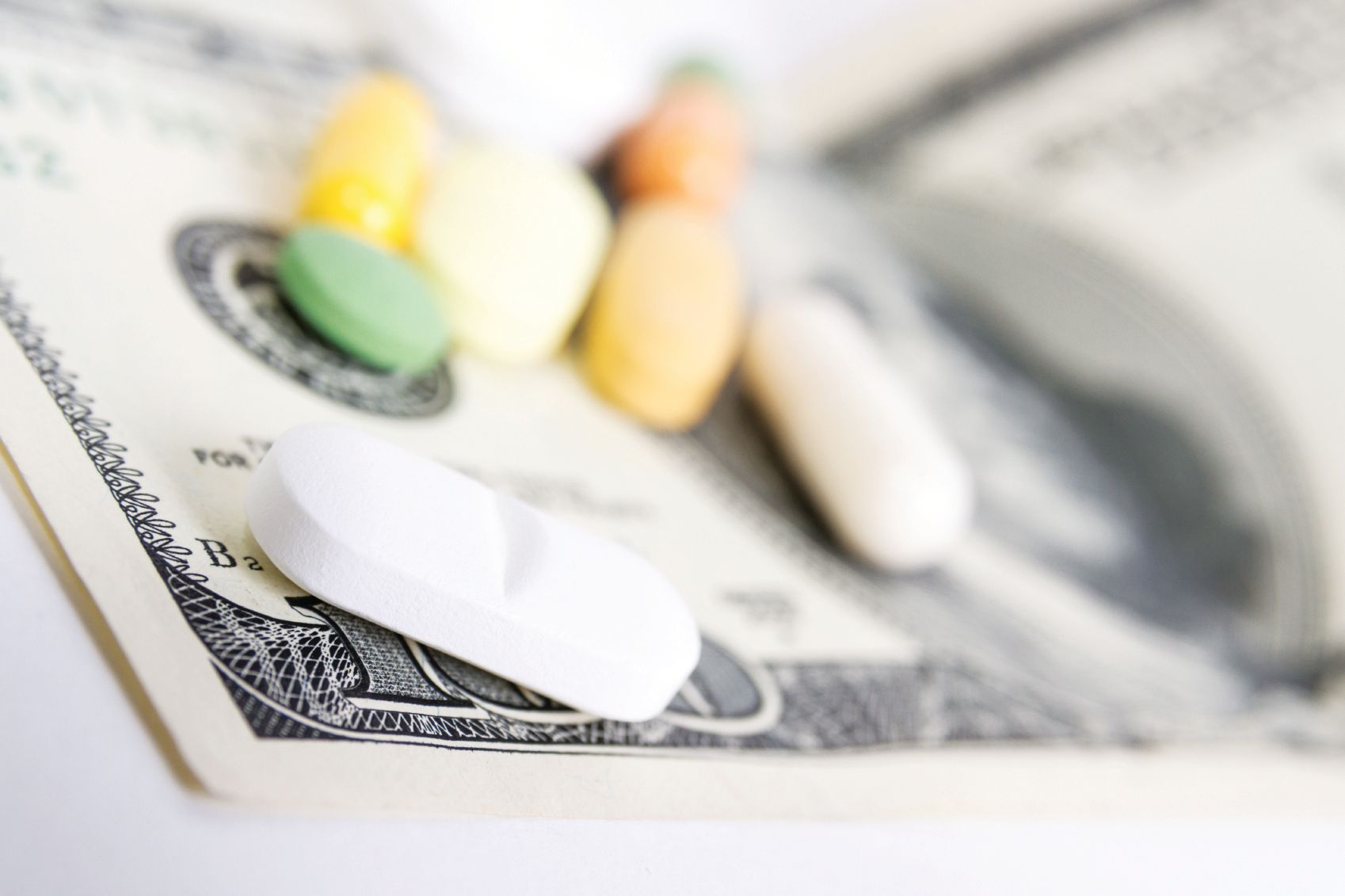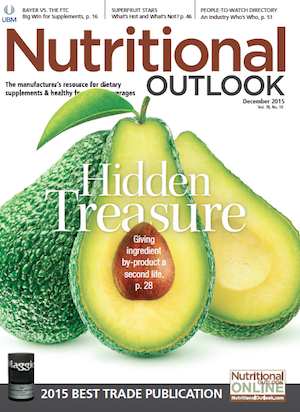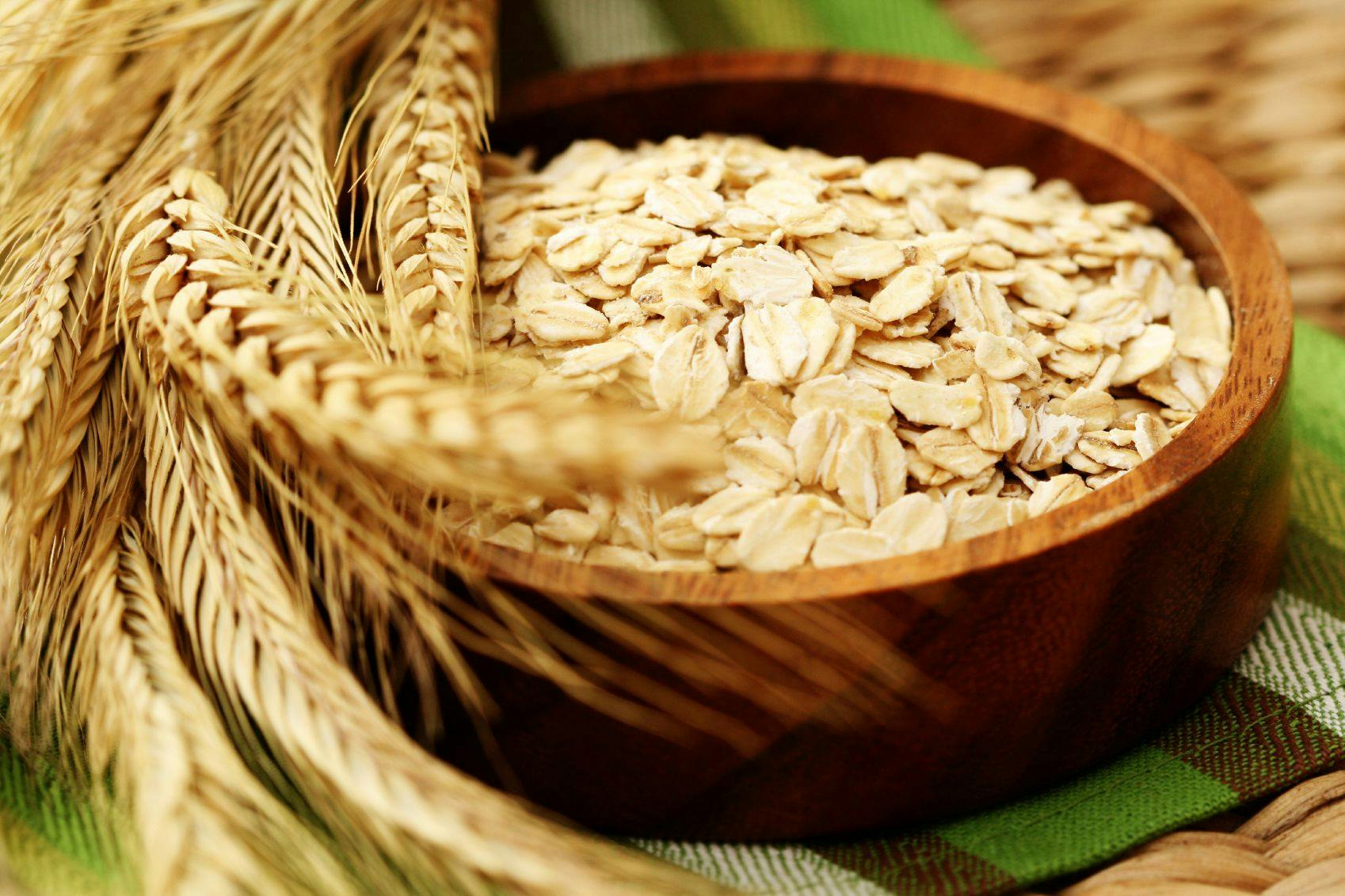The Dietary Supplements Market in 2015: Business Is Good
The supplements industry is surviving-even thriving-in a difficult year.
Photo © iStockphoto.com/ilyast


As 2015 winds down and a new calendar year is set to begin, the nutrition-supplements industry can take heart that, despite some very public challenges, sales are up, around 2.5%–3%, from 2014. Data collected from both SPINS and Euromonitor International data-analysis firms support this assertion, indicating that negative media attention directed at the supplements market this year has had minimal, if any, lasting impact on total industry growth so far.
Chris Schmidt, senior analyst, consumer health, Euromonitor International, says that, in general, the “total vitamin and supplement category performed pretty well in 2015, growing 3% in constant terms. In the United States it’s a pretty mature category,” he adds, so “when you examine the entire category, you’re not going to see explosive growth rates, because the industry is so large and well-established.” What you will see, he says, is what he calls “underlying demand growth.”
The current underlying demand growth of the supplements market is respectable. Schmidt explains. “It is still pretty strong, especially for a mature market.”
Longtime industry leader Jim Emme, CEO of NOW Foods, confirms what the numbers show: “Our experience is that the industry is in good shape, it’s strong, there’s still a lot of consumer demand for supplements and natural products,” he says, noting that demand for NOW Foods’ supplements is up in the United States and Canada, so much so that the company has had to “add capacity” to keep up.
Still Growth…Despite Negative Media and Government Attention
It’s no secret that industry was the subject of greater scrutiny than usual in 2015, particularly from New York Attorney General Eric Schneiderman beginning early in the year, then broadening to include a coalition of state attorneys general that included Connecticut’s George Jepsen, Indiana’s Greg Zoeller, secretary of Puerto Rico’s Department of Consumer Affairs Nery Adames Soto, and, later, Oregon’s attorney general Ellen Rosenblum. These public figures appeared to be crusading for efforts to “eliminate misleading and deceptive labeling for the benefit of consumers,” as Indiana’s Zoeller put it in a press release, with a particular focus on herbal supplements sold at well-known retail outlets GNC, Target, Walmart, and Walgreens.
GNC later reached an agreement with Schneiderman regarding its Herbal Plus products; however, in late October GNC Holdings Inc.’s stock dropped 21% and the bad press continued after Oregon’s state attorney general, Ellen Rosenblum, pronounced that some supplements sold by GNC contained the substances picamilon, described by Rosenblum as a Russian prescription neurological drug, and BMPEA, an amphetamine-like substance, according to Rosenblum. The state of Oregon has filed a lawsuit against GNC over this matter. For its part, GNC issued a statement saying that “the claims made by the Oregon Attorney General are without merit and GNC intends to vigorously defend against these allegations.”
Compounding the bad PR, one month prior to Rosenblum’s filing the lawsuit, New York AG Schneiderman issued cease-and-desist letters instructing 13 dietary supplement manufacturers (including NOW Foods and other established industry names) to stop selling, distributing, and marketing “adulterated or misbranded” devil’s claw supplements. The letters cited a study performed by the New York Botanical Garden that used a DNA-barcoding technique to conclude that the devil’s claw supplements from these manufacturers contained a cheaper related species that is considered “less desirable,” according to Schneiderman’s office. (The American Botanical Council promptly refuted the “less desirable” interpretation, as well as the other conclusions reached by Schneiderman’s office, in a press release.) The AG asked the manufacturers who received the letters to recall any “adulterated” devil’s claw supplements, compensate consumers who purchased the mislabeled products, and reform their quality-control measures.
Finally, unrelated but also in October, a study was published online in The New England Journal of Medicine concluding that dietary supplements send at least 23,000 Americans per year to hospital emergency rooms and cause at least 2,000 to be hospitalized. The report has motivated some health and consumer advocates to again call for heavier FDA regulation of supplements.
So, with dietary supplements under attack, so to speak, in a very public way, how is it that industry has still grown 2%–3% over the course of the same year?
STORY CONTINUES ON PAGE 2
“Negative media stories can have fairly meaningful impacts,” says Euromonitor’s Schmidt, “but those tend to be fairly short-lived. Consumers don’t have really strong long-term memory in terms of any sort of press affecting their consumer purchasing. As soon as a negative story comes out, it’s refuted with positive coverage from the industry or a physicians’ group, etc. We don’t see long-term magnitudinal changes from negative coverage, but it can hit an individual category, like the fish oil category” was hit a few years ago. That category, of course, has been rebounding, thanks to the Global Organization for EPA and DHA Omega-3s’ (GOED) consumer-education campaigns, and was even a notable contributor to industry growth in 2015.
NOW Foods’ Emme, who calls himself an optimist, says that in the more than 20 years he’s been in the supplements industry, 2015 “has been the most prolific year I’ve seen in my natural products career for negative press about the industry.” However, he adds, the silver lining is that industry will renew its focus on supply-chain quality and transparency, and “the role of DNA testing in our industry” will be examined by all stakeholders, with, hopefully, some sound conclusions being reached regarding what that role is. “We all, industry and government authorities alike, have a lot to learn about DNA testing,” he says.
Non-Herbal Supplements Led the Way in 2015
Products in the non-herbal/traditional vitamins and supplements category appear to be largely responsible for driving sales growth and keeping the entire supplements industry humming in 2015, according to Euromonitor’s Schmidt. He points to eye-health supplements, proteins, and probiotics as being notable performers, as well as fish oils, which are making a solid recovery from their 2013 decline.
Eye-Health Supplements
Eye-health supplements have seen consistent growth since 2010, Schmidt explains. Combination antioxidant products based on the formulas used in the National Institutes of Health’s Age-Related Eye Disease Study (AREDS and AREDS2), and standalone ingredients like lutein, “have done well,” he says.
Protein
Protein supplements, mainly in powder form but increasingly in new ready-to-drink formulations, continued to do very well overall in 2015. Kimberly Kawa, natural products specialist, SPINS, calls plant-based and animal-based proteins-especially the multiple-sourced formulations-“the best performers based on both sales volume and percent growth.” Her data show, for instance, that multi-sourced animal-based proteins saw U.S. sales of $368 million in 2015 (in the channels for which SPINS collects data), up about 20% from the prior 52-week period. Protein products formulated with a combination of both animal- and plant-based proteins led the whole protein category in dollars with U.S. sales of $1.4 billion, up just a bit-a little under 1%-from the previous year.
Likewise, Euromonitor’s Schmidt concurs that protein supplements continued to grow “really strongly” in 2015. He points specifically to non-sports–positioned products, such as Vega, and the more generic proteins marketed for general wellness or for promoting energy throughout the day.
Probiotics
Euromonitor puts the size of the U.S. probiotics-supplements market, listed as retail-sales price (RSP), as $1.7 billion in 2015. SPINS reports 15% growth in sales of probiotics from 2014 to 2015 in all combined U.S. retail sales channels for which the firm collects data (natural supermarkets [excluding Whole Foods], specialty supermarkets, conventional multi-outlet [includes Walmart]). Both SPINS and Euromonitor agree that growth of the probiotics market has been strong for a few years, despite the category’s maturation, particularly in the mass market, notes Schmidt. He adds that probiotics have “always been pretty strong in the specialty and health-food channels, but a lot of the category’s recent growth was related to promotion from brands like Align and Phillips’ Colon Health that were really targeting the average-Joe mass consumer.”
Fish Oil
Interestingly, fish-oil products are “growing pretty strongly,” says Schmidt. This is a category that is, of course, in recovery after growth dropped off pretty sharply in 2013 because of negative press coverage. “Fish oils were growing 10% a year until 2013, when they dropped significantly, to about 3%, then growth climbed back up to about 5% or 6%,” Schmidt says. He credits GOED and what he calls its “holistic consumer education” campaign for “pushing the category up” after the 2013 decline. GOED Executive Director Adam Ismail explains the group’s efforts this way: “We have found that providing small amounts of positive reinforcement through educational campaigns like this one can have a significant impact. Our campaign focused on getting reinforcing messages in front of the consumer via television, Internet search, digital ads, social media, and public relations. Ideally, we would continue this campaign throughout the year, or in multiple waves to sustain this effect.”
Ismail agrees with Schmidt that growth in fish oils is generally good but varies by sales channel. Schmidt’s figures are “representative of what we are seeing in the natural foods, practitioner, and direct-to-consumer channels,” he confirms, “but the food, drug, and mass channels are still down slightly.”
Vitamins D, C, and B12
Beyond eye-health supplements, proteins, probiotics, and fish oils, sales of non-herbal vitamins and supplements also show letter vitamins D, C, and B12 as doing particularly well, with sales of each from all combined channels studied by SPINS (again, natural supermarkets [excluding Whole Foods], specialty supermarkets, conventional multi-outlet [includes Walmart]) growing more than 10% from the 52-week period ending on September 7 of this year. Vitamin D’s sales growth was 13%, vitamin C (not including Ester-C) was 11%, and vitamin B12 was 11%.
STORY CONTINUES ON PAGE 3
Herbals/Botanicals Only Slightly Less Robust
The way this category is defined and the products contained therein vary depending on who’s crunching the numbers. But, generally speaking, herbal and botanicals are roughly holding steady, despite the media fallout they experienced this year. Euromonitor puts the total U.S. market size for herbals/traditional dietary supplements in 2015, as listed RSP, at $3.5 billion. SPINS notes a very slight decline in herbal/botanical sales, from all channels for which it collects data, from September 2014 to September of this year: less than 1%. And NOW Foods’ Jim Emme says his company, for one, is seeing growth in botanicals and herbs.
Euromonitor’s Schmidt remarks that “as a total category, herbal/traditional dietary supplements are growing slightly slower than the entire nutritional-supplements industry overall, slightly less than 2% annually from 2010 to 2015” by his firm’s calculations, but he points to “some pretty strong divergence among some of the subcategories.” Some of the products that have been around a long time, such as garlic, are growing very modestly, holding steady, or dropping a little bit year over year. “They are not quite as relevant; there hasn’t been as much innovation there. But then we see categories like fiber, for instance, which has recovered strongly from recalls thanks to new promotion around digestive health and satiety. Also, we are seeing some of the more trendy ingredients popping up a little bit more.”
These trendier, new-to-the-U.S.-consumer herbs and botanicals include ivy leaf and acacia fiber, according to SPINS data.
Herbs and botanicals showing strong sales volume in terms of U.S. dollars for 2015 include horehound, Echinacea, cranberry, flax seed/oil, green teas and supplements, and turmeric, according to SPINS sales data. Whether sales of devil’s claw will be significantly affected by New York AG Schneiderman’s targeting of the herb this summer remains to be seen. The herb is not a cash cow in the United States anyway, and it had already undergone a 14% dip in the 12 months that preceded the attorney general’s actions, according to SPINS data.
Reaching Out, Looking Inward
It is remarkable how well industry has taken a difficult, year-long (and counting) public-relations experience and turned it into an opportunity for self-reflection and consumer education. Trade associations and other industry groups have been quick to respond to the bad press, and as NOW Foods’ Emme puts it, “They’ve all been doing a very good job responding to the educational needs of consumers and trying to set the record straight.”
These groups include the nonprofit, educational American Botanical Council, whose proactive measures included printing a 12-page feature article about the NY attorney general’s laser-focus on herb testing in its HerbalGram publication, as well as a summary of two DNA barcoding-related white papers, an editorial on Schneiderman’s misuse of DNA methods, and a press release responding quickly to the devil’s-claw testing and issuance of cease-and-desist letters.
The Council for Responsible Nutrition has been vocal as well, issuing a number of statements, press releases, white papers, and infographics with information regarding DNA testing of herbal supplements, FDA’s oversight of supplements, and industry’s commitment to quality and supply-chain management. In a late-October e-mail message to Nutritional Outlook, Judy Blatman, senior vice president, communications, CRN, stated that the organization “does not think that negative media attention has had much of an impact on the industry, particularly from a sales perspective,” and adds that “consumers may be tuning out the noise.” However, she states that “even though it’s good news that, according to our [most recent consumer] survey, 68% of American adults take supplements and over 80% have confidence in the products, we can’t become complacent. As our industry continues to grow and mature, we need to ensure accountability to consumers through self-regulatory and quality-control initiatives, and to support FDA and FTC when it makes sense on the regulatory front.”
NOW Foods’ Emme echoes Blatman’s sentiments, saying, “We’re always looking for ways to partner with our ingredients suppliers to make sure the supply chain is reliable. We’ve always been vigilant with our supply chain, we will continue to do so, and we’re encouraging others to as well.
“We believe the next big industry trend is going to be more companies making sure they know exactly where their ingredients are coming from. Going out to visit the source, going out to visit the manufacturers if they aren’t in North America. Some companies do this already, but it’s going to be more and more important for us to make sure that our supply chain is reliable and, frankly, meets the standards that we all set.”
He adds, “The best testing methods in the world won’t protect against a bad supply chain.”
Also read:
U.S. Herbal Supplement Sales Up 6.8% in 2014

Prinova acquires Aplinova to further increase its footprint in Latin America
April 7th 2025Prinova has recently announced the acquisition of Brazilian ingredients distributor Aplinova, which is a provider of specialty ingredients for a range of market segments that include food, beverage, supplements, and personal care.























